Under cover: PMMT draw on Catalan tradition for tile-clad TR House
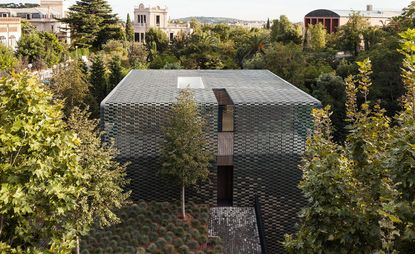
As if building a house isn’t already a design and logistical challenge, imagine having to build a second one on the same sloping site, but in a way that is unobtrusive whilst mainlining its own space and privacy. Barcelona-based architects PMMT solved the puzzle with commendable aplomb for this three-storey family home in St Gervasio, a residential neighborhood in Barcelona at the foot of Tibidabo Mountain.
Built in the gardens that surround an existing 19th-century home belonging to the client’s parents, the biggest challenge was to integrate the new building into the landscape, and without blocking any views of the parents’ house. The fairly steep slope required the architects to split the volume of the house, so that the whole is terraced on separate levels below street level.
The resulting orientation of the TR House has meant that most of the interiors face inwards towards an open core through which light pours in, to create a calmness of space that is almost Japanese in its austerity.

Take an interactive tour of TR House
Maximià Torruella, PMMT’s general director, says ‘all of the rooms and spaces in the house are organized around a central courtyard, and all feature differing connections with their surroundings based on their specific needs.’
The façade is a mix of glass and vertical timber slats, but the eye is always drawn to the pergola on the upper floor terrace where a cloak of green vitrified ceramic tiles, assembled on a stainless steel wired net, practically cascades down the side of the building.
The use of tiles in this way – part of a new patented building material and technique dubbed Fabrik and manufactured by the New Jersey-based Shildan Group, that debuted at this year’s AIA Convention – meant the architects were able to create open internal spaces that are protected from the sun and neighbours, while blending in with the surrounding greenery.
‘Glazed ceramic has always been a traditional material in Catalan architecture because it can endure humidity and strong sun without noticeable change to its properties,’ says Torruella. ‘Moreover, Fabrik has the benefit of being a traditional material fused with a new technology. We also appreciated the possibility of using the product both vertically and horizontally, so that we could build the home's façades and its roof using a single solution.’

The architects had to balance eye catching design with clever orientation, to blend with the landscape and avoid blocking the views from the existing home

The new building is wrapped in an external skin of tiles – part of a new patented building material and technique dubbed Fabrik and manufactured by the New Jersey-based Shildan Group

Complementing the ceramic tiles, the rest of the building is a mix of glass and vertical timber slats

Inside, the house is flooded with light through large openings and lots of glazing

The sharp interior is calm and almost Japanese in its austerity

The new house features a generous living space on the ground floor, which combines inside and outside areas...
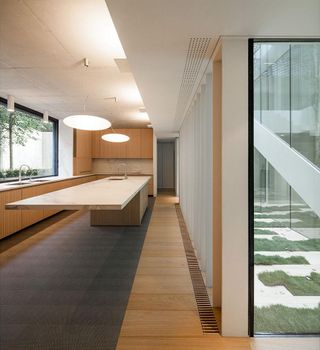
...while kitchen and service areas sit at the opposite end of the building, also on ground level
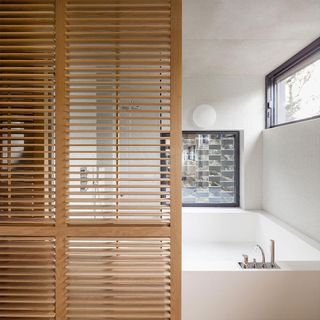
Upstairs, the structure features four bedrooms with ensuite bathrooms, including a master suite with its own dressing area
INFORMATION
For more information visit the architect’s website
Wallpaper* Newsletter
Receive our daily digest of inspiration, escapism and design stories from around the world direct to your inbox
Daven Wu is the Singapore Editor at Wallpaper*. A former corporate lawyer, he has been covering Singapore and the neighbouring South-East Asian region since 1999, writing extensively about architecture, design, and travel for both the magazine and website. He is also the City Editor for the Phaidon Wallpaper* City Guide to Singapore.
-
 A guide to Frank Gehry's architecture: mesmerising, expressive and sometimes controversial
A guide to Frank Gehry's architecture: mesmerising, expressive and sometimes controversialCanadian-American Frank Gehry has earned his position in the hall of fame of contemporary architects through a wealth of groundbreaking designs; here, we explore why, how, and his key projects
By Ellie Stathaki Published
-
 A nature-inspired exhibition takes root at California's Salmon Creek Farm
A nature-inspired exhibition takes root at California's Salmon Creek Farm'Jinen' presents new works by Dan John Anderson, Kazunori Hamana, Yu Kobayashi, and Ido Yoshimoto at Fritz Haeg’s cultural commune and creative hub in California’s redwood forest
By Léa Teuscher Published
-
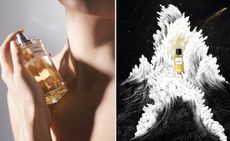 Chanel Comète: the exclusive fragrance creates the scent of stardust on your skin
Chanel Comète: the exclusive fragrance creates the scent of stardust on your skinAs Chanel releases Comète, the latest fragrance from Les Exclusifs de Chanel, its creator Olivier Polge speaks with Laura Bailey about his process
By Hannah Tindle Published
-
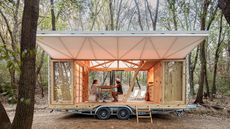 MOCA is a self-sufficient mobile home offering freedom to work (and roam)
MOCA is a self-sufficient mobile home offering freedom to work (and roam)MOCA (Mobile Catalyst) is a sustainable mobile home designed by the Institute for Advanced Architecture of Catalonia, and taking remote working to a new level
By Tianna Williams Published
-
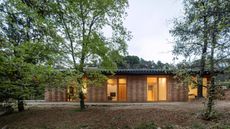 Low-energy house in Catalonia minimises its footprint to make the most of its site
Low-energy house in Catalonia minimises its footprint to make the most of its siteAlventosa Morell Arquitectes’ low-energy house in Catalonia nestles into the landscape
By Jonathan Bell Published
-
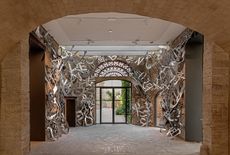 Hortensia Herrero Art Centre puts Valencia on the contemporary art map
Hortensia Herrero Art Centre puts Valencia on the contemporary art mapHortensia Herrero Art Centre launches in Valencia, offering a home for contemporary art to sit side by side with archaeological treasures
By Blaire Dessent Published
-
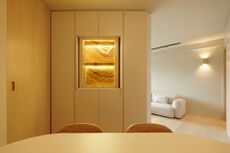 Collective, Hong Kong and Spain: Wallpaper* Architects Directory 2023
Collective, Hong Kong and Spain: Wallpaper* Architects Directory 2023With bases in Hong Kong and Spain, Collective joins the Wallpaper* Architects’ Directory 2023, our annual round-up of exciting emerging architecture studios
By Ellie Stathaki Published
-
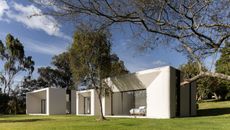 Nicolás y Nicolás, Spain and Ecuador: Wallpaper* Architects’ Directory 2023
Nicolás y Nicolás, Spain and Ecuador: Wallpaper* Architects’ Directory 2023With offices in Spain and Ecuador, Nicolás y Nicolás is part of the Wallpaper* Architects’ Directory 2023, our annual round-up of exciting emerging architecture studios
By Ellie Stathaki Published
-
 This light-filled Spanish house is defined by openness and geometry
This light-filled Spanish house is defined by openness and geometryA Spanish house by Arquitecturia Camps Felip is designed around its courtyards and its six volumes’ bold geometry
By Ellie Stathaki Published
-
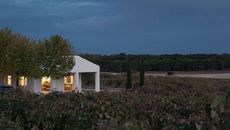 Spain’s Casa Primitiva is ruled by simplicity
Spain’s Casa Primitiva is ruled by simplicityThe pared-back Casa Primitiva by Hanghar fits in perfectly in its semi-rural Spanish context
By TF Chan Published
-
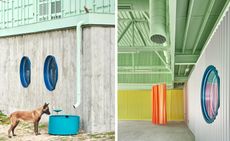 Architecture for animals leads the way at this school for dogs
Architecture for animals leads the way at this school for dogsDetails are designed with dogs in mind at Spain’s Educan School for Dogs, Humans and Other Species
By Hannah Silver Published